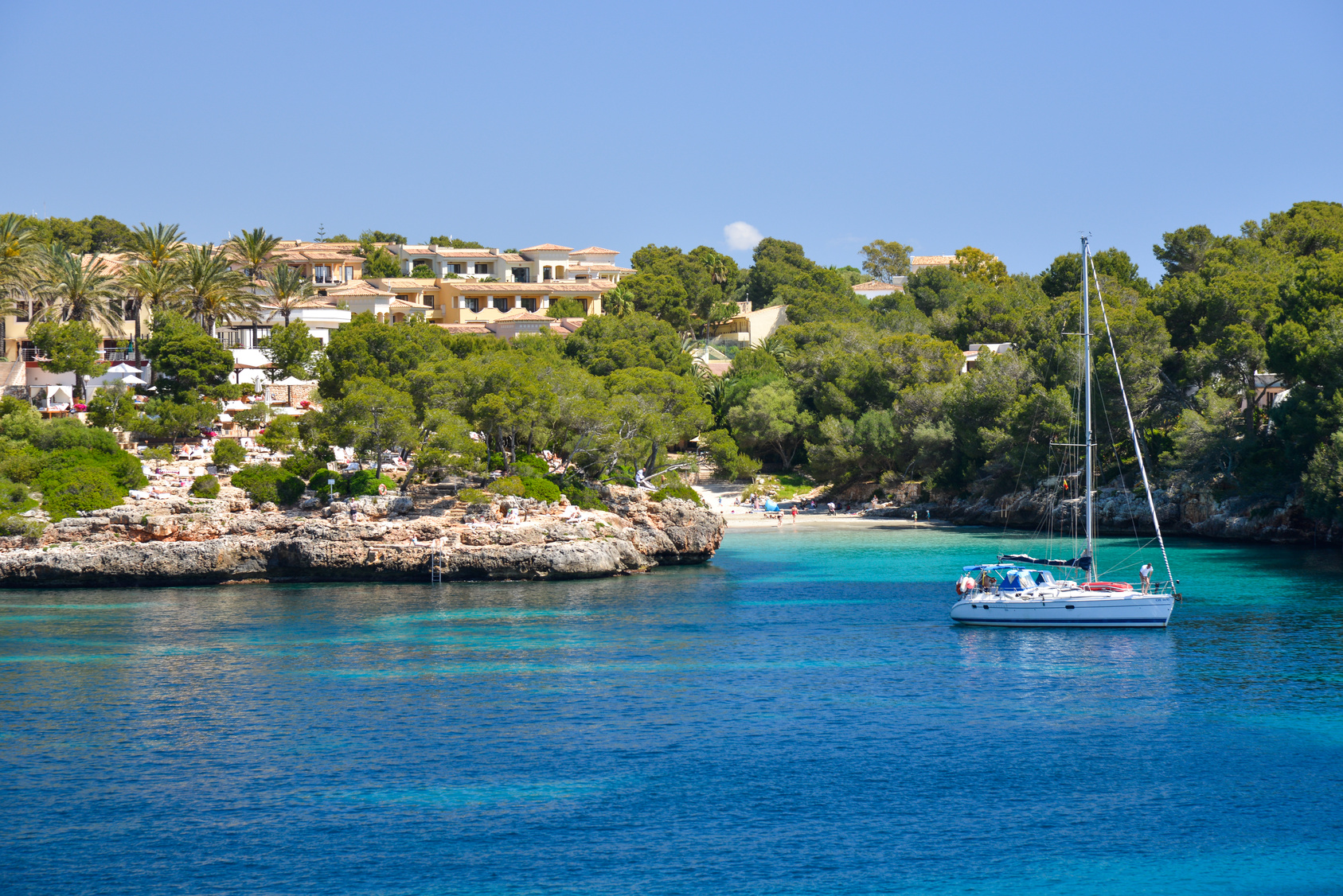Majorca has been a hugely popular tourist destination for many years, attracting travellers from all around the world with its warm weather and beautiful scenery. While this has of course led to a lot of development, with businesses keen to cater to the big tourist market, there are still places you can go to enjoy some island calm – places like Puerto Pollença.
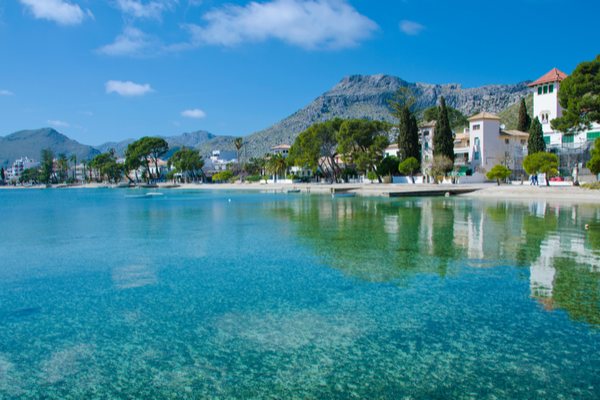
The first thing that strikes you about this small town on the island’s north side is how quaint it feels. Building restrictions mean that there are few high-rises, and long swathes of beach have been left to develop. It’s come a long way from its fishing port beginnings, but Puerto Pollença still feels homely and charming.
Read on for some of the best things to do in the area if you’re interested in history and culture – its historic connections range from Agatha Christie to 1930s air raids.
Cap d’Formentor and Pine Walk
Translated from Catalan, the name of this peninsula means ‘end of Formentor’ – an appropriate name for this spit of land which juts 20km out from Majorca’s north end.
Described as a hidden-away natural paradise, this is the perfect place to experience Majorca’s quieter, wilder side, with one highlight being the sheltered cove beach surrounded by pine trees. Take in the beautiful sights including the mountain backdrop, Mirador de Mal Pas and the Talaia d’Albertcrux watchtower.
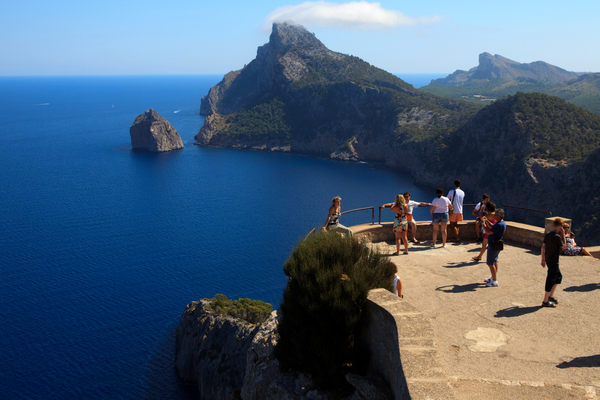
Culture and Glamour
Wealthy families from Madrid and Palma built opulent retreats between Puerto de Pollença and the peninsula in the early twentieth century. Tourism soon followed, with the Hotel Formentor opening in 1930 and hosting a litany of guests, including:
- Charlie Chaplin
- Winston Churchill
- Audrey Hepburn
- Grace Kelly and Prince Ranier
Writers F. Scott Fitzgerald and Agatha Christie also spent time here, with the latter even inspired to set a story here, with ‘Problems at Pollença Bay’.
Top Tip: As you wander the area, keep an eye out for the majestic falcons which make their nests here in winter.
The Lighthouse
As you spend time on and around the beach, you might notice a large number of military planes filling the skies. You can take photos, of course. Just remember to admire them from afar, as Pollença’s lighthouse currently acts as an airbase for the Spanish military.
While this is little more than an interesting factoid on its own, the lighthouse played a major role in one of the least well known but most significant moments in the build-up to the Second World War.
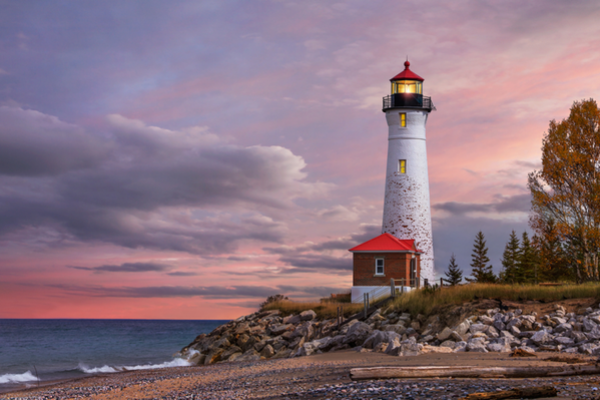
A Storied History
As the Spanish Civil War raged 1936 – 1939, Fascist General Franco, seeking to extend his power, turned this lighthouse off the north end of Majorca into a military base for the first time. Seaplanes were launched from here to subdue antifascist forces on the mainland. Included among them were state-of-the-art German models.
It was these planes, courtesy of Adolf Hitler, which bombed the city of Guernica on 26 April 1937. Though airships had dropped explosives on London decades earlier in the First World War, Guernica was often regarded as the first modern air raid. The destruction shocked the world, inspiring Pablo Picasso to respond with his famous oil-on-canvas cry of anguish, Guernica, completed June that year. This sobering episode leaves much to think about.
Hiking and Walks
There are a variety of treks to enjoy around Puerto Pollença. The Boquer Valley walk, for instance, leads hikers through lush flora and imposing rocky landscapes to a beautiful, isolated cove.
Perhaps even better though, is Dry Stone Route. Known in the local Catalan as Ruta de Pedro en Sec, this hike will take you through the Tramuntana Mountains for over four hours. It’s long and challenging, but also incredibly rewarding. There’s no better way to experience the island’s wild, untamed natural beauty than fully immersing yourself in it.
Top Tip: Follow the hike all the way to the end to see the former monastery of Lluc.
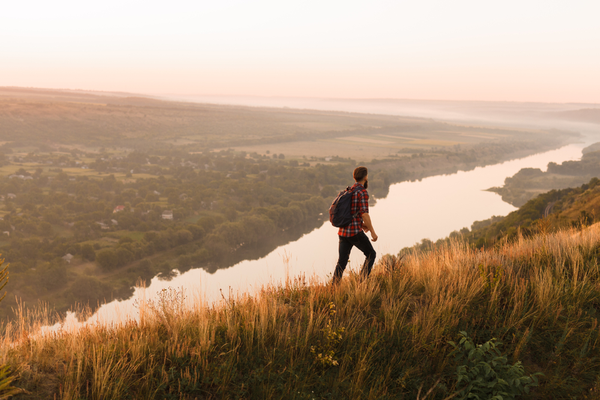
Where to Stay
Mere metres from the beach and in the classy, isolated Pine Walk area, Capri offers guests special rates on lunch and dinner at its Italian restaurant and access to a terrace and lounge area. All rooms are air-conditioned and come with satellite TV, private bathrooms and a minibar, while some have wonderful views of the bay or the surrounding mountains.
Again close to the beach, and this time surrounded by gardens, Cabot Pollença is perfect for relaxing, with a hot tub, sauna, spa, Turkish bath, and outdoor swimming pool. The spacious, bright rooms come with satellite TV and air-conditioning, and the habour and old town are just a 15-minute walk away.
How to Get There
Flights from London to Palma Majorca take around two and a half hours, with plenty of airlines in all budget ranges offering frequent direct flights. For best results, book outside of peak times and school holidays when prices can drop below £50.
Once you land, a pre-booked transfer can get you from the airport to town in less than an hour.
Overview
- UK to PMI flight time: 2 hours 30 minutes.
- PMI to Puerto Pollença distance: 67 kilometres.
- Shuttle Direct Transfer Time: 52 minutes.

About Shuttle Direct
Shuttle Direct is one of the highest rated airport transfer services in all Europe and North Africa. Our experienced drivers get you where you need to go quickly and easily – and they’re more than happy to offer local tips for your destination. Book online today and save yourself future travel hassles.


